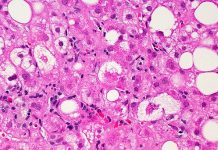Two henipaviruses, Hendra virus (HeV) and the Nipah virus (NiV) are already known to cause fatal disease in humans. Now, a novel henipavirus has been identified in febrile patients in Eastern China. This is phylogenetically distinct strain of henipavirus and has been named Langya henipavirus (LayV). The patients had recent history of exposure to animals, hence suggestive of animal to human transfer. This seems to be a newly emerged virus that has strong implications for human health.
Hendra virus (HeV) and the Nipah virus (NiV), belonging to genus Henipavirus in the virus family Paramyxoviridae emerged in the recent past. Both are responsible for fatal diseases in humans and animals. Their genome consists of a single-stranded RNA surrounded by an envelope of lipid.
Hendra virus (HeV) was first identified in 1994-95 through an outbreak in Hendra suburb in Brisbane, Australia when many horses and their trainers became infected and succumbed to lung disease with bleeding conditions. Nipah virus (NiV) was first identified few years later in 1998 in Nipah, Malaysia following local outbreak. Since then, there have been several cases of NiV across the world in different countries especially in Malaysia, Bangladesh, and India. These outbreaks were usually associated with high mortality among both human and livestock.
The fruit bats (Pteropus), also known as flying fox, are natural animal reservoirs of both Hendra virus (HeV) and the Nipah virus (NiV). Transmission occurs from bats via saliva, urine, and excreta to humans. Pigs are intermediate host for Nipah while horses are intermediate hosts for HeV and NiV.
In humans, HeV infections present influenza-like symptoms before progressing to fatal encephalitis while NiV infections often present as neurological disorders and acute encephalitis and, in some cases, respiratory illness. Person-to-person transmission occurs in late stage of infection1.
Henipaviruses are highly pathogenic. These are fast emerging zoonotic viruses. In June 2022, researchers reported characterization of another henipavirus named, Angavokely virus (AngV)2. This was identified in urine samples from wild, Madagascar fruit bats. Its genome shows all majour features associated with pathogenicity in other henipaviruses. This too could become a problem if spilled over to humans, given the fact that bats are consumed as food in Madagascar.
On 04 August 2022, researchers3 reported identification (characterisation and isolation) of yet another novel henipavirus from the throat swab of febrile patients during sentinel surveillance. They named this strain Langya henipavirus (LayV). It is phylogenetically related to Mojiang henipavirus. They identified 35 patients with LayV infection in Shandong and Henan provinces of China. No other pathogens were present in 26 of these patients. All patients with LayV had fever and some of the other symptoms. Shrews seem to be the natural reservoir of LayV, as study of small animals revealed presence of LayV RNA in 27% of shrews, 2 % of goats and 5% of dogs.
The findings of this study suggest that LayV infection was the cause of fever and associated symptoms among the patients studied and small domestic animals were the intermediate hosts of the LayV virus.
***
References:
- Kummer S, Kranz D-C (2022) Henipaviruses—A constant threat to livestock and humans. PLoS Negl Trop Dis 16(2): e0010157. https://doi.org/10.1371/journal.pntd.0010157
- Madera S., et al 2022. Discovery and Genomic Characterization of a Novel Henipavirus, Angavokely virus, from fruit bats in Madagascar. Posted June 24, 2022. Preprint bioRxiv doi: https://doi.org/10.1101/2022.06.12.495793
- Zhang, Xiao-Ai et al 2022. A Zoonotic Henipavirus in Febrile Patients in China. August 4, 2022. N Engl J Med 2022; 387:470-472. DOI: https://doi.org/10.1056/NEJMc2202705
***






































